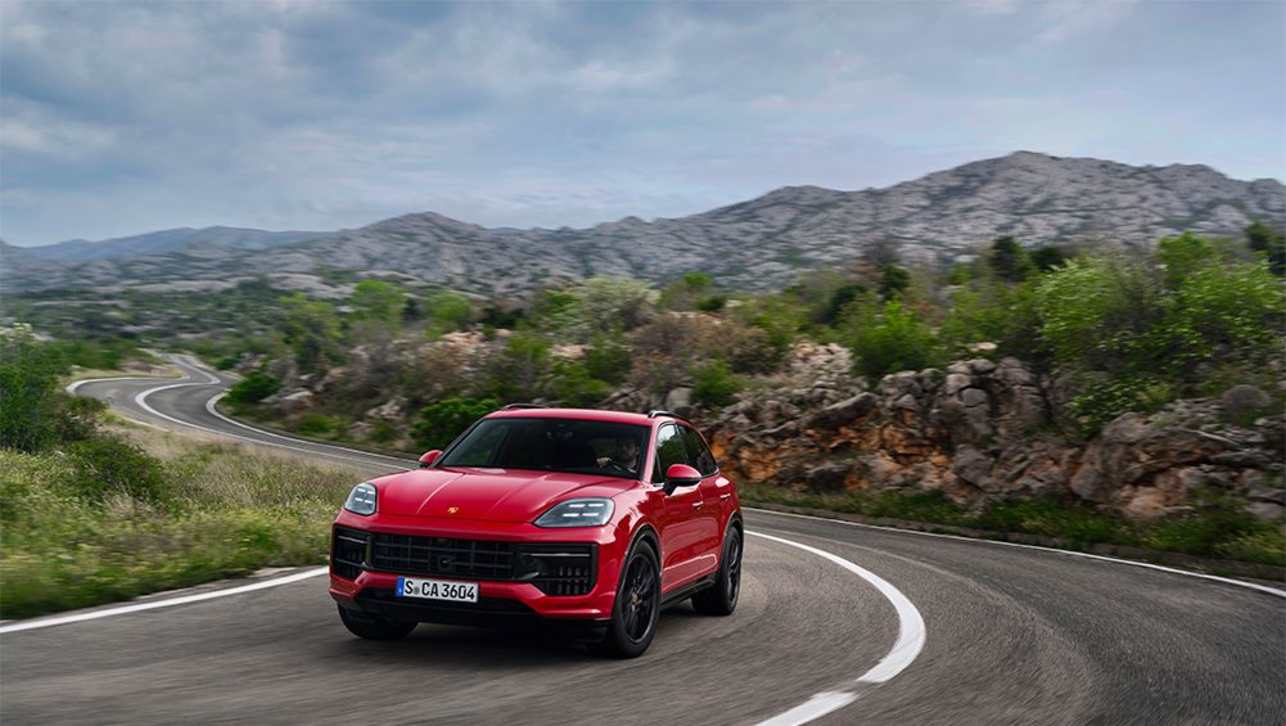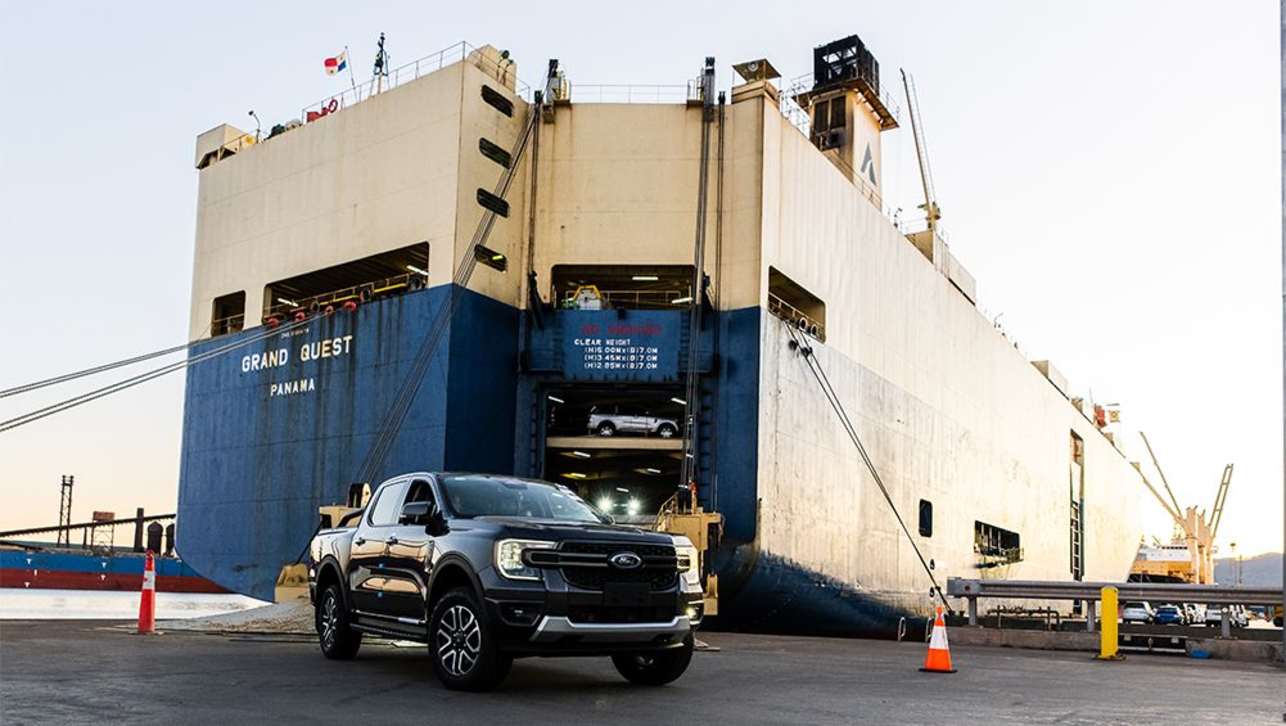The updated 2018 Subaru Outback has arrived on sale in Australia, bringing extra equipment, styling changes, enhanced safety kit, and almost-stable pricing when compared with the record-setting model that preceded it.
The updated Subaru Outback 2018 model is visually differentiated from the pre-facelift version by way of a reconfigured front bumper, revamped grille, new headlights, redesigned wing mirrors (for less wind noise) and new wheels. The plastic wheel-arch cladding is gone from all models, too.
The interior has seen some changes, as well, with a new steering wheel, revised centre console area with new climate controls and vents, as well as new materials and dash-top stitching.
.jpg)
The changes are more than skin deep though, with a new media system that incorporates Apple CarPlay and Android Auto smartphone mirroring technology.
Plus the revised model brings with it an updated version of Subaru’s 'EyeSight' driver assistance system with lane-keeping, in addition to its auto emergency braking (AEB) and forward collision monitoring with pedestrian detection and adaptive cruise control (now with brake-light recognition) functionality.
The pre-collision braking system now operates up to 50km/h (was 30km/h) and all Outback models retain the same five-star ANCAP crash test rating from 2015.
Higher-spec models include a new side-view monitor and front-view monitor, allowing better vision around the car when parking. There’s still a reversing camera across the entire range, too, but parking sensors aren’t fitted on any version.
.jpg)
As with the existing model, there are five variants to choose from: the petrol-powered four-cylinder 2.5i and 2.5i Premium; the four-cylinder turbo-diesel 2.0D and 2.0D Premium; and the flagship six-cylinder 3.6R.
The 2.5i engine has 129kW of power and 235Nm of torque, with fuel consumption claimed at 7.3L/100km; the 2.0D has 110kW of power and 350Nm of torque, and uses 6.3L/100km; and the range-topping 3.6R, with its six-cylinder boxer engine, has 191kW/350Nm, with fuel use rated at 9.9L/100km.
Every Outback variant except (weirdly) the entry-level diesel comes with the brand’s 'X-Mode' system that encompasses hill descent control and hill hold assist, and an electronically-controlled limited slip differential lock. There are two on-road drive modes in all four-cylinder variants – 'Sport' and 'Intelligent'.
The 2.5i and 2.5i Premium drivetrains have seen changes, with the engine and transmission tweaked for better response. All Outbacks have seen some suspension adjustments for better ride control as well, and the steering has been fettled for more assuredness.
The range remains priced from $36,240 plus on-road costs for the Outback 2.5i petrol entry-level model, while the almost identically-equipped Outback 2.0D model kicks off at $38,740.
.jpg)
The most affordable model in the range – the 2.0D manual – has been dropped, meaning all models in the range now come as standard with a continuously variable transmission (CVT) auto. Of course, all-wheel drive remains the standard.
The 2.5i and 2.0D get a smaller version of that new media screen – a 6.5-inch version without sat-nav – while the three higher-spec versions get an 8.0-inch screen with integrated navigation. All models see the addition of two rear-seat USB ports, which is very handy for keeping devices charged up on long roadtrips.
Other specification highlights include dual-zone climate control, a leather steering wheel with paddle-shifters, auto headlights and auto wipers, front fog-lights, seven airbags (dual front, front side, curtain and driver’s knee), rear tinted windows, and a rear spoiler.
The 2.0D rides on 17-inch alloy wheels, while the 2.5i (and all other Outback models) have 18s. All models have roof rails fitted – black for the majority of models, but silver for the top-spec 3.6R – and the entry-level 2.5i and 2.0D models miss out on wheel-arch cladding.
For those after a bit more equipment, the higher-spec model range consists of the 2.5i Premium ($42,640 – up $400), the 2.0D Premium ($45,640 – up $400) and the 3.6R ($49,140 – up $400).
The higher-spec 2.5i Premium, 2.0D Premium and 3.6R models all get newly designed LED headlights with steering responsiveness and adaptive high-beam, as well as LED daytime running lights (DRLs). Those LED DRLs are on the entry-grade models too, but the main headlights are halogen units.
Standard kit in the 2.5i Premium and 2.0D Premium models includes leather trimmed seats, heated front seats, electric front seat adjustment (driver’s seat with adjustable lumbar), an electric sunroof, that bigger media screen, powered and heated folding side mirrors, front wipers with de-icing function, keyless entry with push-button start, electric boot opening and closing and piano black interior trim highlights. The 2.0D Premium also gets X-Mode.
The 3.6R model includes a three-mode drive select system (Sport# - sport sharp – mode added), and it also gets chrome side sill garnishes and a 12-speaker haman/kardon sound system with subwoofer.







.jpg)
.jpg)



.jpg)
.jpg)
.jpg)



.jpg)
.jpg)
.jpg)

_0.jpg)

.jpg)
.jpg)




Comments